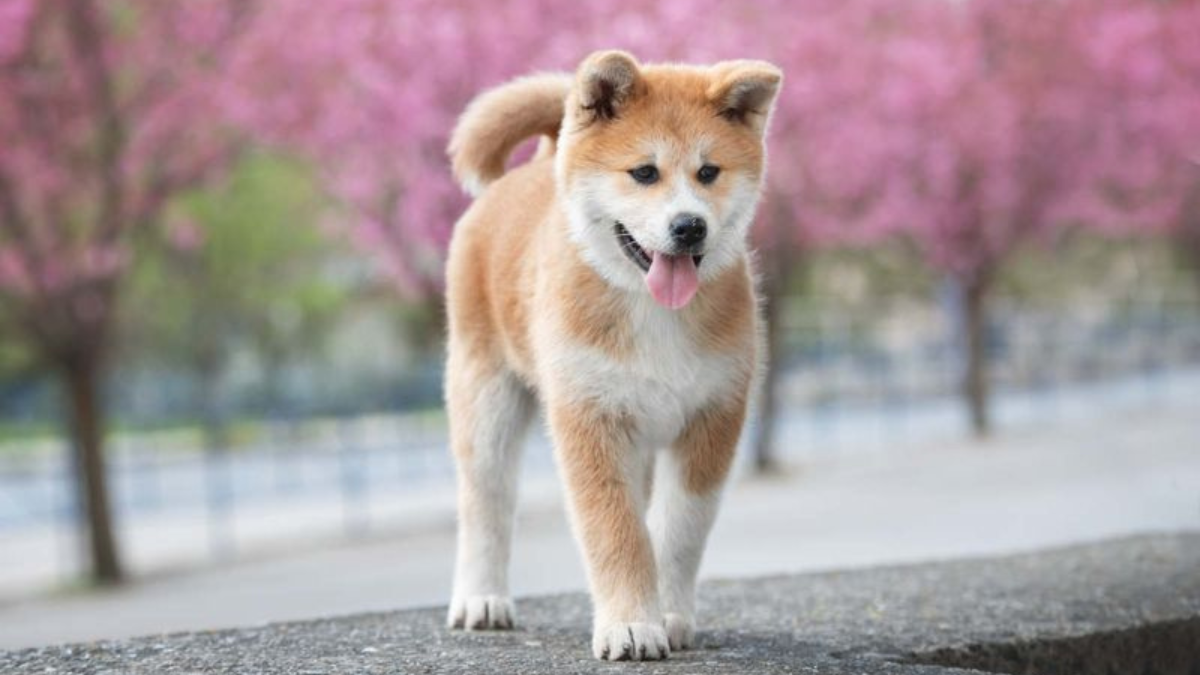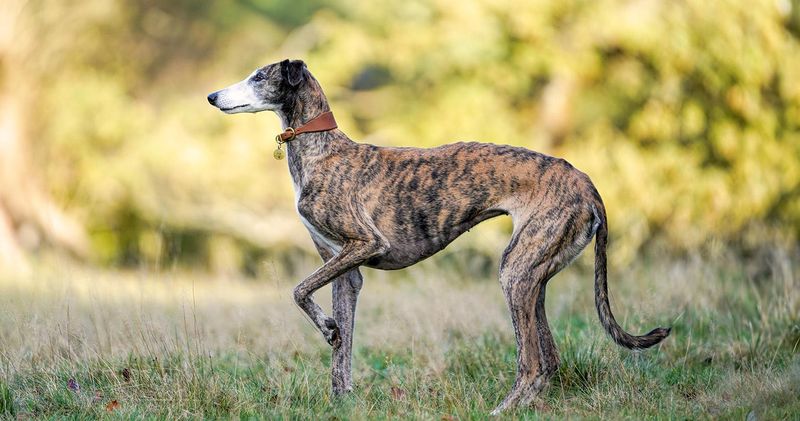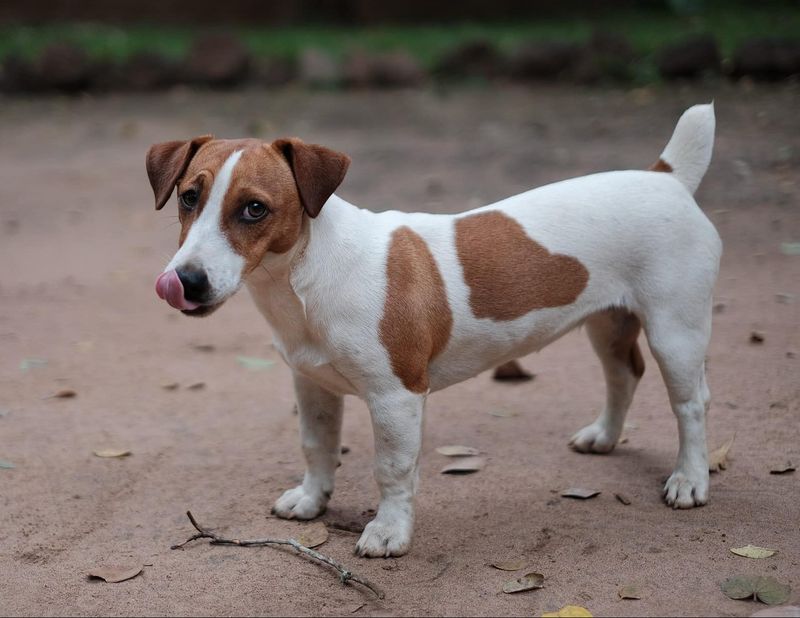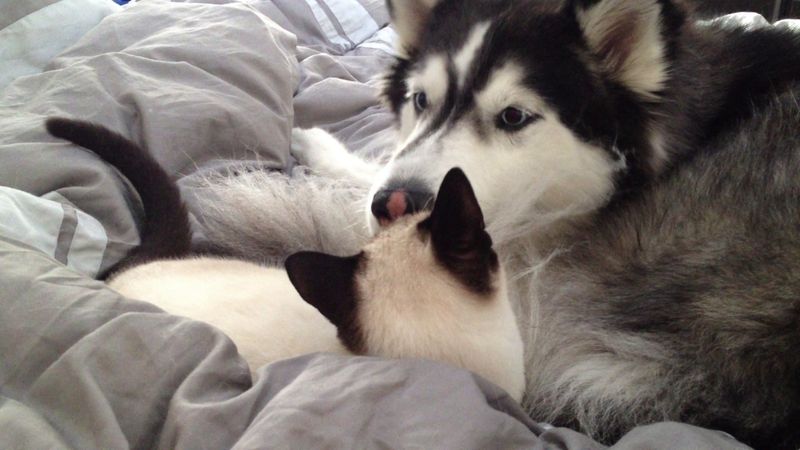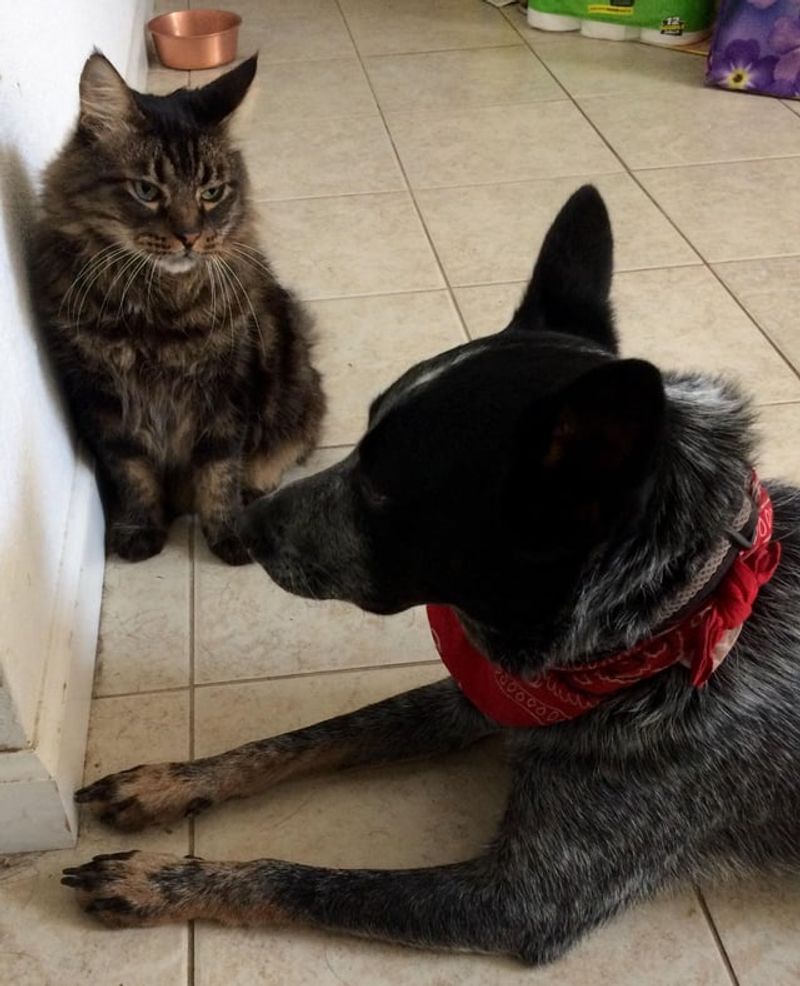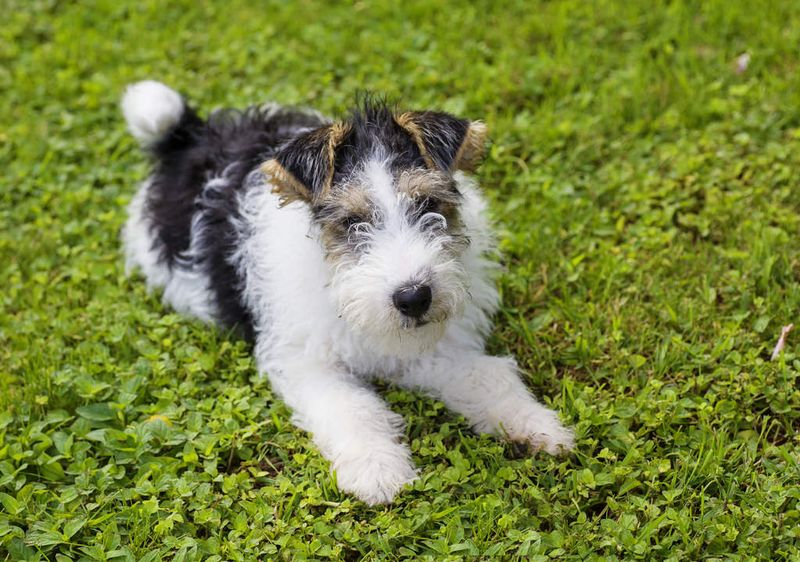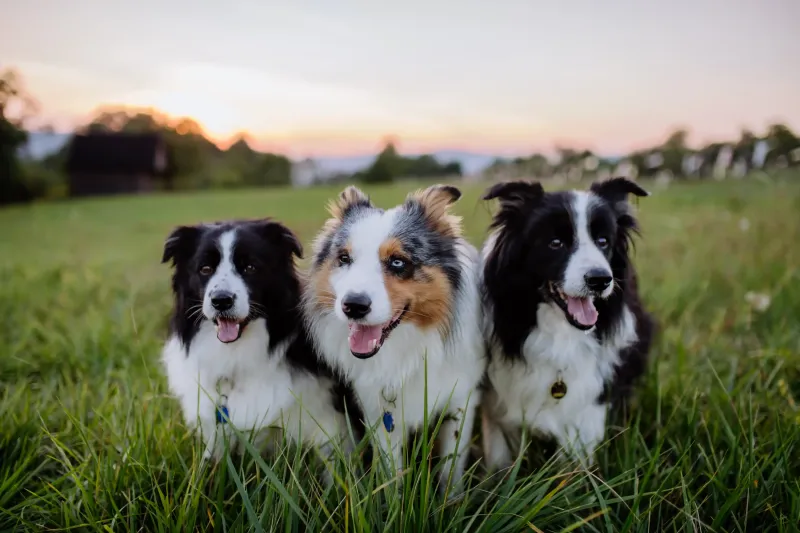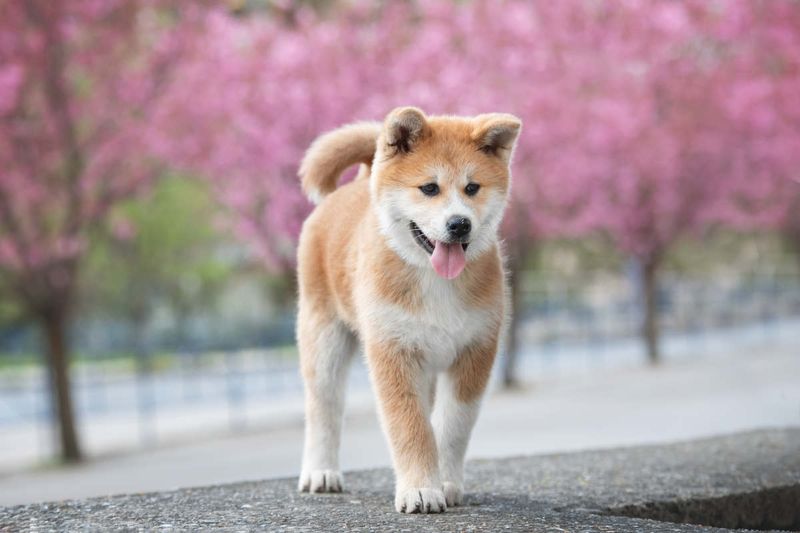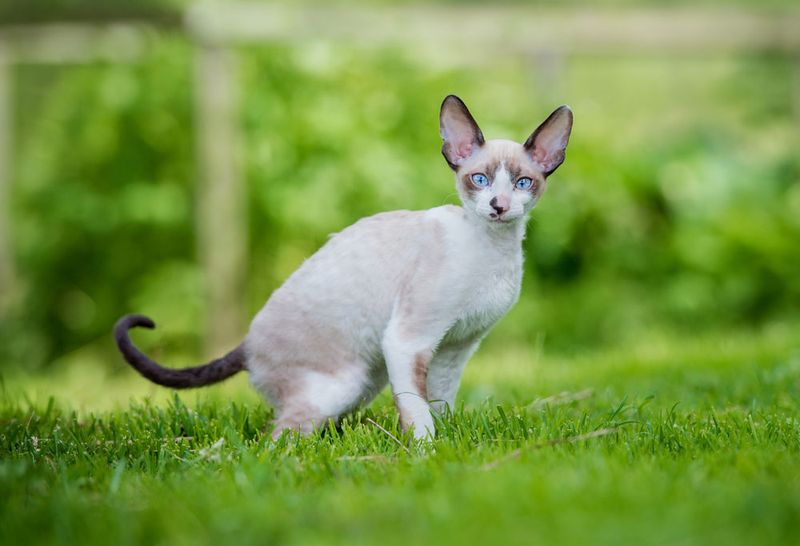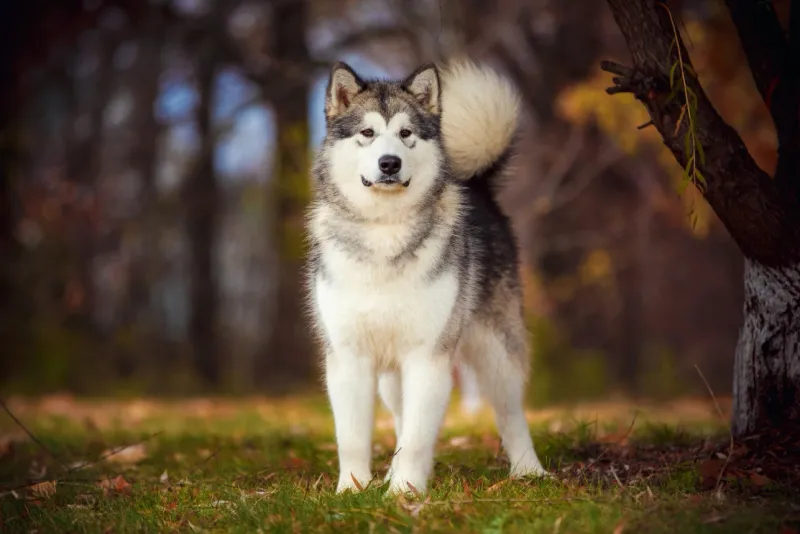📖 Table of Content:
- 1. Greyhound and Abyssinian
- 2. Jack Russell Terrier and Persian
- 3. Siberian Husky and Siamese
- 4. Australian Cattle Dog and Maine Coon
- 5. Fox Terrier and Russian Blue
- 6. Weimaraner and Bengal
- 7. Beagle and Ragdoll
- 8. Border Collie and Sphynx
- 9. Akita and Scottish Fold
- 10. Rhodesian Ridgeback and Cornish Rex
- 11. Alaskan Malamute and Devon Rex
- 12. Dachshund and Egyptian Mau
- 13. German Shorthaired Pointer and Bombay
Many imagine a peaceful home where dogs and cats coexist effortlessly, lounging side by side. However, reality can be quite different when instincts and personalities collide. Some pets simply aren’t wired to get along, no matter how much socialization they receive.
Certain dog breeds have strong prey drives, while some cats can be territorial and easily stressed. These natural traits can lead to tension, barking, hissing, or worse — full-blown fights. Breed history and temperament often play a major role in these pet conflicts.
Recognizing which combinations are prone to conflict is essential for a calm and safe home. Preventing mismatched pairings can save owners from stress and pets from harm. A little foresight can go a long way in creating a balanced environment for all animals involved.
1. Greyhound and Abyssinian
Greyhounds possess a powerful prey drive that makes them view small, quick-moving animals as targets. When an Abyssinian cat darts across the room with their characteristic speed and agility, it triggers the Greyhound’s chase instinct instantly.
The problem compounds because Abyssinians are naturally curious and active cats who rarely sit still. They love exploring high places and making sudden movements – behaviors that can provoke a Greyhound’s hunting response.
Even with training, this combination remains risky. The Greyhound’s racing background and the Abyssinian’s energetic nature create a potentially dangerous situation where instinct often overrides training.
2. Jack Russell Terrier and Persian
With a history rooted in hunting, Jack Russell Terriers are hardwired to chase. Their boundless energy and fierce determination make them relentless when something moves. Once they’re locked in, they’re not letting go easily.
Persian cats, with their laid-back temperament and sedentary lifestyle, become stressed by the Jack Russell’s constant movement and barking. The anxiety can lead to health problems for these sensitive felines.
The size difference creates another concern. Jack Russells are small but powerful dogs who don’t recognize their limitations, while Persians are not agile enough to escape quickly if needed. This mismatch of energy and capabilities often leads to conflict.
3. Siberian Husky and Siamese
The prey drive in Huskies remains strong due to their ancestral roles in sledding and survival. Siamese cats, with their sleek build and sudden movements, can inadvertently provoke a hunting response. This natural behavior often challenges peaceful coexistence.
Siamese cats contribute to the problem with their vocal, demanding personality. Their loud meows and assertive behavior can trigger the Husky’s dominance response or hunting instincts. The Siamese’s territorial nature means they rarely back down from confrontation.
Temperature preferences create additional friction – Huskies thrive in cool environments while Siamese cats seek warmth. This leads to competition for comfortable spaces in the home, creating further opportunities for conflict between these strong-willed animals.
4. Australian Cattle Dog and Maine Coon
Bred to herd, Australian Cattle Dogs instinctively chase, nip, and bark to maintain control. These actions can be stressful, even frightening, for cats. Their tireless energy keeps them on high alert around other animals.
Maine Coons present a particular challenge because of their size and independence. As one of the largest domestic cat breeds, they don’t easily intimidate and will stand their ground when challenged. Their natural hunting skills make them formidable when cornered.
The territorial nature of both breeds creates constant power struggles. Australian Cattle Dogs want to control the environment while Maine Coons demand freedom to roam. This fundamental conflict of needs makes peaceful coexistence nearly impossible.
5. Fox Terrier and Russian Blue
Don’t be fooled by their size—Fox Terriers are lightning-fast and laser-focused. Bred to chase foxes out of dens, they’ve got a natural urge to pursue small animals. With nerves like live wires, they’re constantly on high alert.
Russian Blues value peace and predictability above all else. These sensitive cats become extremely stressed by the Fox Terrier’s barking and sudden movements. Their reserved nature makes them poor candidates for adapting to a dog with such an exuberant personality.
The hunting techniques of Fox Terriers are particularly alarming to cats – the digging, pouncing, and shaking motions trigger fear responses in Russian Blues. Even well-socialized individuals of these breeds typically maintain a tense relationship at best.
6. Weimaraner and Bengal
Weimaraners were developed as hunting dogs with exceptional tracking abilities and high prey drive. Their intense focus and persistence make them relentless when they’ve locked onto a target, creating dangerous situations for cats in the same household.
Bengal cats, with their wild ancestry and athletic abilities, trigger the Weimaraner’s hunting instincts more than most breeds. Their quick movements and tree-climbing behaviors read as prey behaviors to the dog. The Bengal’s playful pouncing can be misinterpreted as aggression.
Both animals require extensive exercise and mental stimulation. When bored, they’re more likely to engage in problematic behaviors toward each other. Their matching energy levels might seem compatible, but actually creates a volatile situation where play can quickly escalate to predatory behavior.
7. Beagle and Ragdoll
Led by their noses, Beagles are hardwired to track anything that moves. Originally bred to hunt rabbits and small game, their instincts still run deep. Even a friendly cat can quickly become a target when that prey drive kicks in.
Ragdolls present a particular risk because of their unique temperament. Unlike most cats, they don’t have strong flight responses and tend to go limp when handled – a trait that earned them their name. This passive reaction means they may not escape quickly when a Beagle gives chase.
The Beagle’s vocal baying causes extreme stress for Ragdolls, who thrive in quiet, peaceful environments. The constant noise can lead to anxiety-related behaviors and health problems in these sensitive cats, creating a miserable living situation for both animals.
8. Border Collie and Sphynx
With laser-like focus and a mind built for control, Border Collies are master herders. Their iconic “eye” and silent stalking tactics are tools of the trade—but to cats, they feel more like a threat than a game. These instincts run deep and don’t fade easily, even with consistent training.
Sphynx cats, lacking the protective fur of other breeds, are particularly vulnerable to nips or scratches that might occur during herding attempts. Their hairless bodies offer no protection from even minor confrontations.
The Border Collie’s need for constant mental stimulation can lead to problematic fixation on the Sphynx as an outlet for their working energy. Meanwhile, the Sphynx’s need for warmth means they often seek sunny spots or heating vents – precisely the areas a Border Collie might guard or patrol, creating territorial conflicts.
9. Akita and Scottish Fold
Born to protect their territory, Akitas carry deep-rooted instincts to guard and hunt. Their strong jaws and independent spirit make them formidable around unfamiliar animals. When those protective instincts kick in, smaller pets may find themselves at risk.
Scottish Folds tend to be playful well into adulthood, with kitten-like behaviors that can trigger the Akita’s prey drive. Their distinctive folded ears give them an unusual appearance that some dogs find particularly stimulating or confusing.
Both breeds are known for their stubborn personalities and reluctance to back down from confrontation. The Scottish Fold’s curiosity often leads them to investigate the Akita’s space, while the dog’s strong resource guarding tendencies mean they vigorously defend food, toys, and resting areas from the cat’s innocent explorations.
10. Rhodesian Ridgeback and Cornish Rex
Crafted by nature for the chase, Rhodesian Ridgebacks possess unmatched tracking skills and raw power. Their athleticism makes them relentless pursuers when instincts take over. This combination can pose a significant risk to smaller pets, such as cats.
Cornish Rex cats move in distinctive ways due to their unique muscle structure. Their rabbit-like hops and quick, erratic movements can trigger the Ridgeback’s prey response more intensely than other cats’ more fluid movements.
The Cornish Rex’s playful, mischievous personality leads them to initiate games that the Ridgeback might misinterpret as prey behavior. Their thin coat and slender build offer little protection in physical confrontations. Even supervised interactions between these breeds can quickly become dangerous due to their mismatched physical capabilities.
11. Alaskan Malamute and Devon Rex
Built for teamwork and survival in harsh conditions, Alaskan Malamutes retain intense hunting instincts. Their sheer power makes them a potential threat to smaller pets, even during friendly play. Controlling their prey drive requires ongoing vigilance and effort.
Devon Rex cats, with their elfin appearance and playful nature, often fail to recognize danger signals from large dogs. Their curiosity and social personality lead them to approach dogs when more cautious cats would keep their distance.
Temperature preferences create additional friction between these breeds. Malamutes overheat easily and seek cool spots in the home, while the Devon Rex’s sparse coat means they gravitate toward warm areas. This competition for comfortable spaces creates ongoing territorial disputes that can escalate into dangerous confrontations.
12. Dachshund and Egyptian Mau
Dachshunds were bred to hunt badgers underground, giving them a tenacious personality and strong prey drive. Their distinctive barking and digging behaviors create constant stress for most cats. Despite their small size, they’re fearless and determined when pursuing perceived prey.
Egyptian Maus are among the fastest domestic cats, capable of speeds up to 30 mph. This rapid movement triggers the Dachshund’s chase instinct immediately. The Mau’s spotted coat resembles small game animals, further stimulating the dog’s hunting response.
Both breeds are highly territorial and intelligent, leading to complex power struggles over resources and space. The Egyptian Mau’s natural climbing abilities mean they often seek high perches, which the Dachshund may perceive as the cat planning an attack from above, creating a cycle of mistrust and defensive behaviors.
13. German Shorthaired Pointer and Bombay
Still as statues and sharp as arrows, German Shorthaired Pointers freeze on the scent of prey. This unwavering focus can unnerve cats, signaling an impending strike. No amount of training fully erases this primal behavior.
Bombay cats, with their sleek black coats, can trigger stronger prey responses in hunting dogs compared to lighter-colored cats. Their fluid movements and midnight-black appearance make them appear more like wild prey animals in the dog’s perception.
The Bombay’s playful nature and love of interactive games can be misinterpreted by the Pointer as an invitation to chase. Both breeds are highly intelligent and need mental stimulation, but their methods of play are fundamentally incompatible, often resulting in the cat becoming an unwilling participant in the dog’s hunting games.
